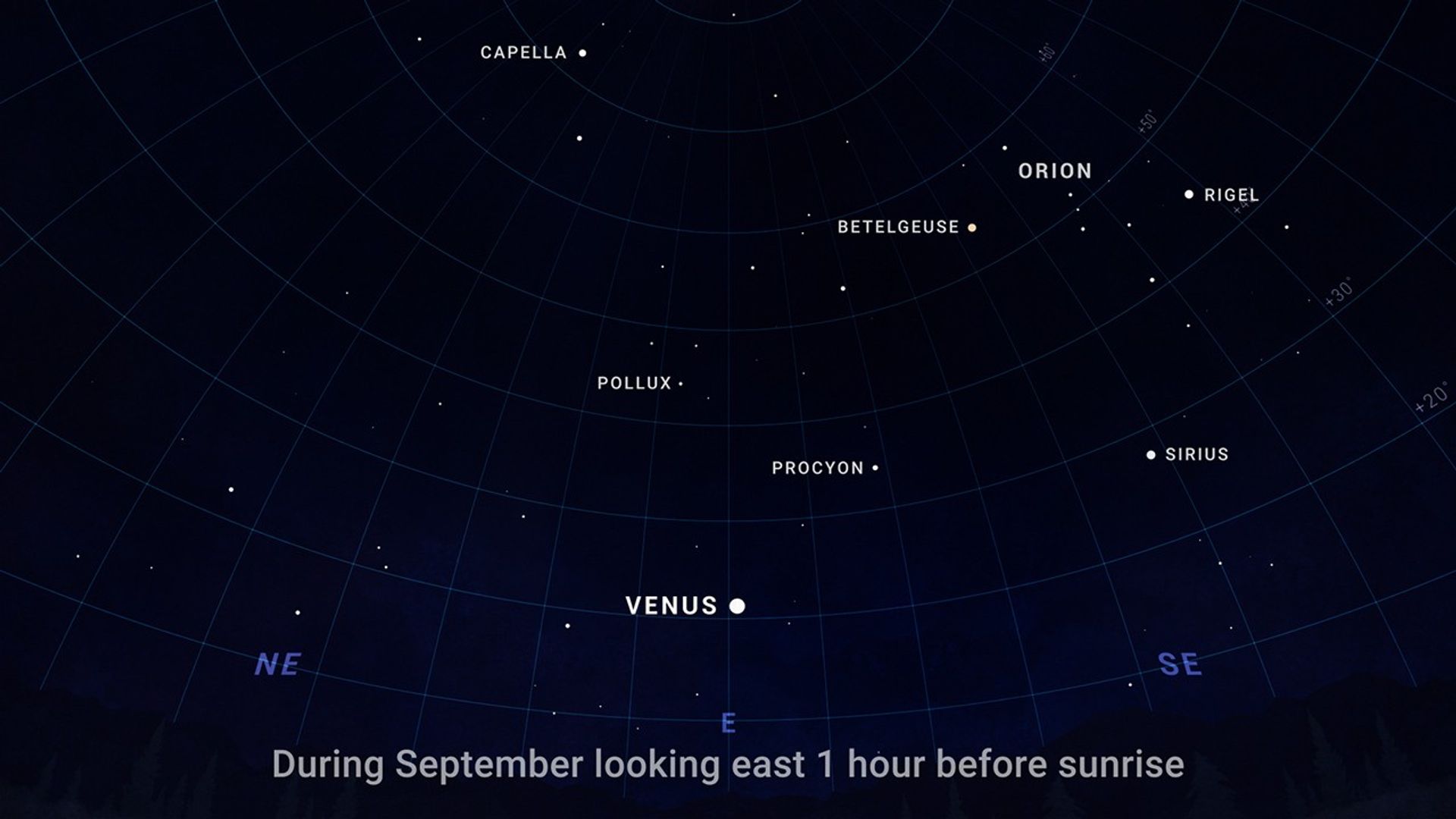What’s Up: September 2023 Skywatching Tips from NASA
| Credit | NASA/JPL-Caltech |
|---|---|
| Language |
|
What's Up for September? Venus returns to the morning sky, the Harvest Moon, and in search of zodiacal light…
After brightening our evening skies for most of this year, Venus has now switched over to being a morning sky object. Look for the superheated, cloud-covered planet as a bright beacon in the eastern sky before sunrise throughout the month. It will appear fairly high in the sky from the Northern Hemisphere – reaching 30 to 40 degrees above the horizon by month's end, depending on your latitude.
Meanwhile, Saturn and Jupiter continue this month as easy-to-observe planets. Find Saturn low in the southeast after sunset, with Jupiter rising a couple of hours later. Saturn then sets a couple of hours before sunrise, leaving Jupiter to rule the sky on its own until the Sun comes up. You'll find Jupiter together with the Moon, high in the southwest before dawn on September 4th.
The full moon on September 29th will be the fourth and final supermoon of the year. As we mentioned in last month's video, supermoons are full moons that occur when the Moon is near the closest point in its orbit around Earth.
This month's full moon is also known as the Harvest Moon, being the closest full moon to the September equinox. This is around the time when lots of crops in the Northern Hemisphere reach their peak. The harvest moon provides a few days of bright moonlight right after sunset, which traditionally helped farmers have a bit more time to bring in their crops in advance of the first frost.
On cool, moonless September mornings before dawn, you might have an opportunity to search for the zodiacal light. It's a triangular or cone-shaped pillar of faint light that stretches upward from the horizon, and it's easiest to observe around the time of the equinoxes in March and September.
The zodiacal light is sunlight reflecting off of an interplanetary dust cloud. This dust fills the inner solar system out to the inner fringes of the main asteroid belt, just past Mars.
In September, Northern Hemisphere skywatchers should look for the zodiacal light in the east during the hour or so before before morning twilight begins. Southern Hemisphere observers will want to look to the west in the hour following evening twilight.
Relatively dark skies give you the best chance to observe it, and the Moon will be absent from pre-dawn skies during the latter half of September, making zodiacal light easier to spot north of the equator during that time.
Now, most of this dust orbits the Sun in the same plane as the planets do. So it's like looking out, into the disk of the solar system. It's thought to have several potential sources including comets, the planet Mars, and asteroids.
And speaking of asteroids, we'll soon have opportunities to study one here on Earth, when NASA's OSIRIS-REx mission delivers its samples from asteroid Bennu this month. The OSIRIS-REx spacecraft collected a sample of rocks and dust from the surface of the near-Earth asteroid in 2020, and it's now approaching Earth to return them for study. As it nears Earth, the spacecraft will release its sample return capsule, which will land in Utah on September 24th.
Here are the phases of the Moon for September.
Stay up to date with all of NASA's missions to explore the solar system and beyond at nasa.gov. I'm Preston Dyches from NASA's Jet Propulsion Laboratory, and that's What's Up for this month.































